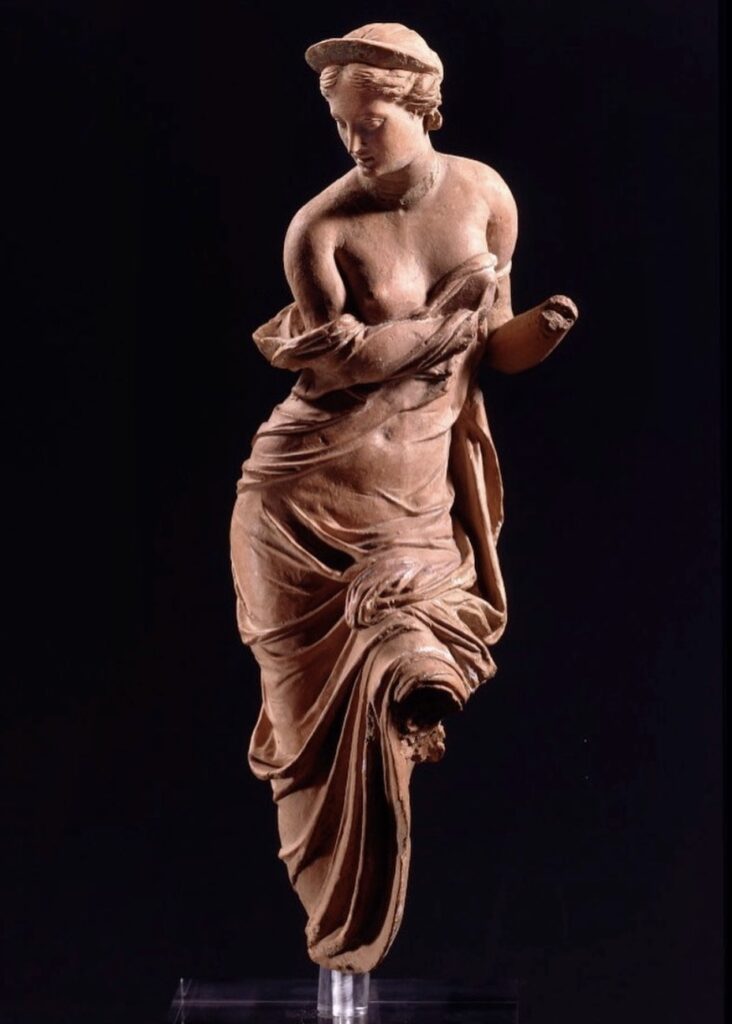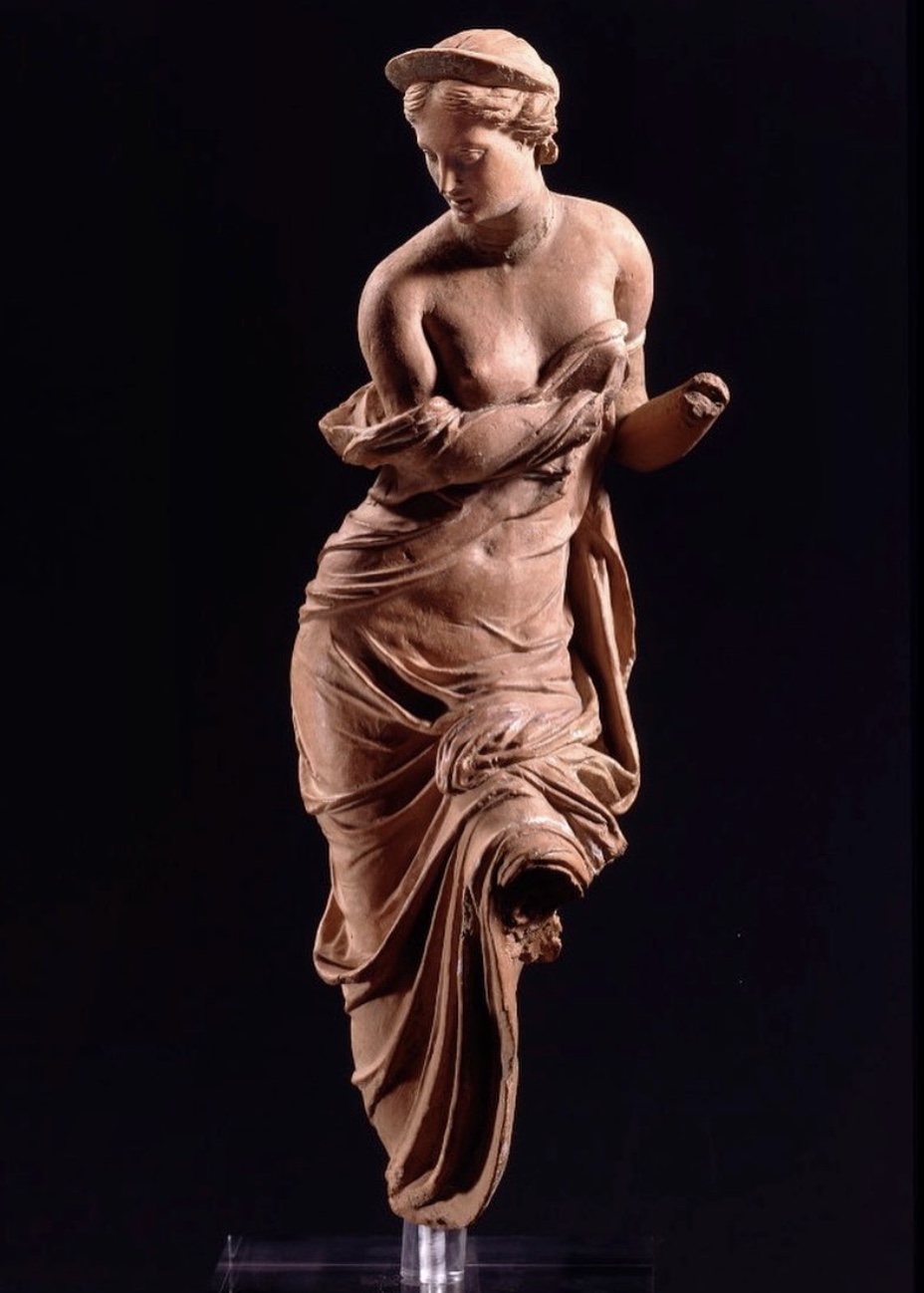There are a lot of ancient representations of Aphrodite to have survived, but this important terracotta one is frequently ignored these days – passed over to focus on her splashier marble sisters.
Currently in Berlin, she is usually known as the ‘von Heyl Aphrodite’, acquired by the Berlin Antikensammlung in an auction of the von Heyl collection in 1930 (following up a post regarding provenance last week…it is interesting to note the mechanisms of the art market, museums, and public perception at play in the early 20th century….).
She is a beauty, and at over 30 centimetres in preserved height, quite large for a statuette made with a single mould. She stands with one leg slightly bent and raised, twisting her upper body around and gazing down (imperious in her high diadem, but benevolent in her expression) and likely once carried something in both hands, perhaps a jewel box. I imagine frolicking Eros at her feet, amusing her.

The drapery is a marvel, emphasizing the twist of her body – or rather the pose is the artist’s excuse to model those exquisite creases, folds, and pleats. The garment also conveniently reveals nearly as much as it covers, diaphanous over the abdomen and navel, and slipping strategically down from her shoulders to reveal a breast. She is the goddess of erotic love, after all!
From the colour or the clay, the statuette likely originated Myrina (Asia Minor, not Game of Thrones) or Pergamon, both famed centres of the coroplastic arts in the Hellenistic period.
Ephemeral polychromy would have enlivened the whole thing, emphasizing the contrast between flesh and folds. Even in the buff, she’s pretty great.




